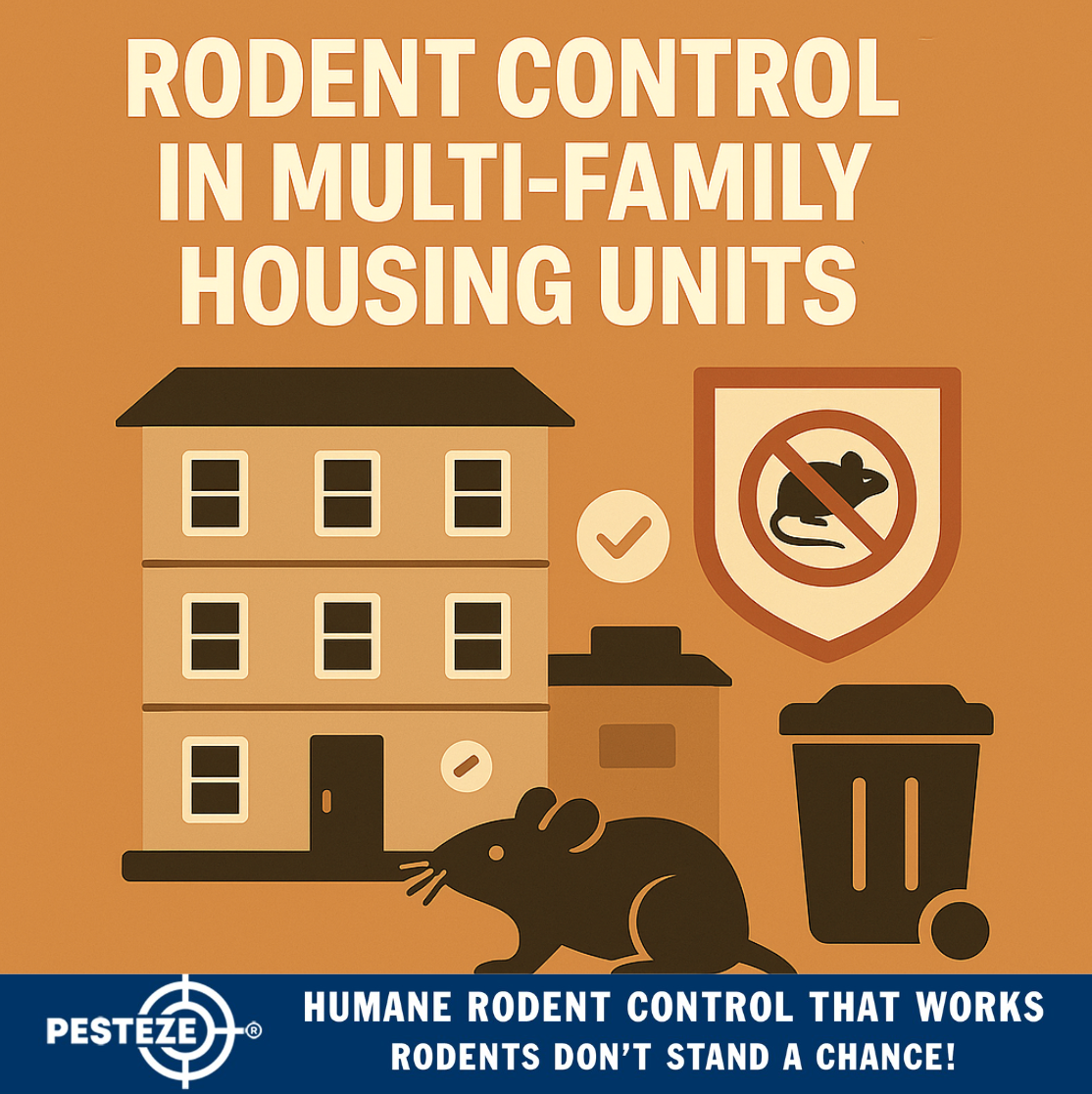RODENT CONTROL IN MULTI-FAMILY HOUSING UNITS

RODENT CONTROL IN MULTI-FAMILY HOUSING UNITS
SUMMARY
Rodent infestations in multi-family housing can spread quickly between units. This guide explains strategies to prevent and control rodents in shared living spaces.
FEATURES
-
Shared Responsibility: Tenants and landlords must work together.
-
Entry Point Inspections: Seal cracks, vents, and utility lines.
-
Waste Management: Secure trash bins and ensure regular pickup.
-
Sanitation Standards: Keep kitchens, hallways, and storage clean.
-
Professional Services: Use pest control for large-scale infestations.
-
Ongoing Monitoring: Regular checks to prevent recurrence.
DESCRIPTION
Multi-family housing units present unique challenges for rodent control because infestations can spread from one apartment to another through walls, ceilings, and shared spaces. Effective control requires cooperation between tenants, landlords, and professional services. The first step is shared responsibility. Tenants must maintain cleanliness within their units, while landlords are responsible for structural maintenance and professional pest control when necessary.
Entry point inspections are essential. Rodents can travel through gaps around pipes, vents, and electrical lines. Sealing these openings with caulk, steel wool, or metal flashing helps prevent rodents from moving between units. Waste management also plays a critical role. Shared trash bins should have tight-fitting lids and be emptied regularly to avoid attracting rodents.
Sanitation standards extend beyond individual units. Hallways, laundry rooms, storage areas, and basements must be kept clean and organized to reduce hiding spots. Regular cleaning schedules enforced by building management keep these areas rodent-free. For larger infestations, professional pest control services are necessary. Experts can deploy traps, baits, and exclusion methods that are safe and effective for multi-unit housing.
Ongoing monitoring ensures long-term protection. Landlords should schedule regular inspections and encourage tenants to report signs of activity, such as droppings, gnaw marks, or unusual noises. Tenants can also support prevention by storing food properly, cleaning up spills immediately, and avoiding clutter.
By combining cooperation, entry point sealing, proper waste management, sanitation, professional services, and consistent monitoring, multi-family housing units can effectively prevent and control rodent infestations.
- Saharsh Bansal


Comments 0